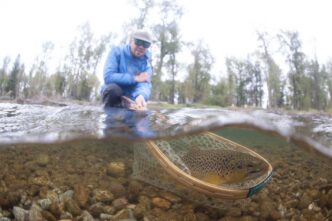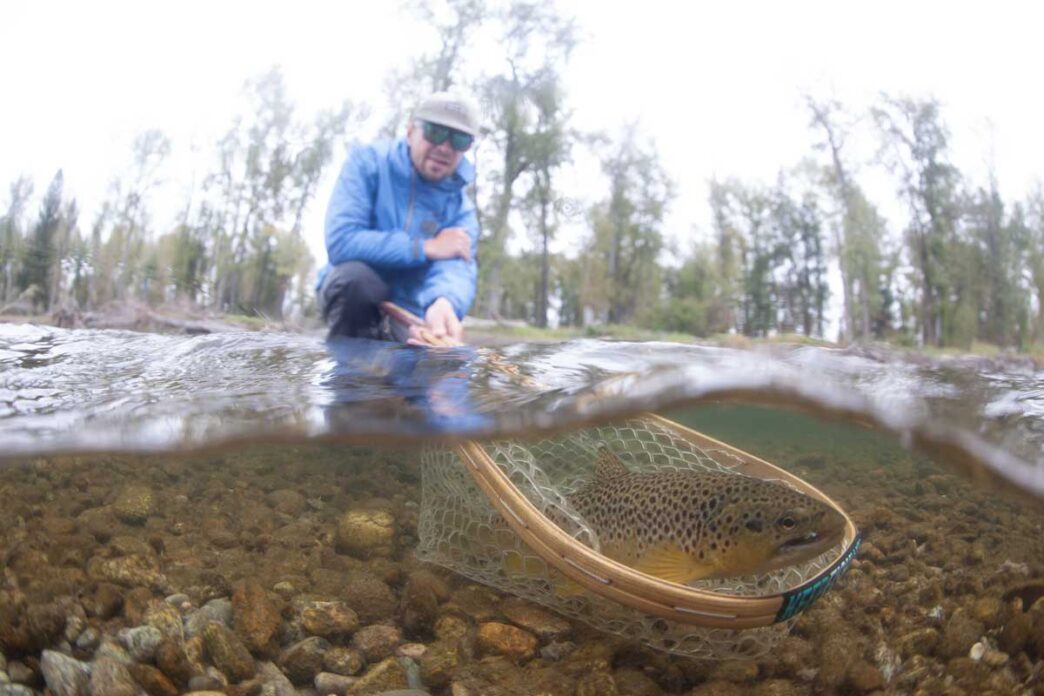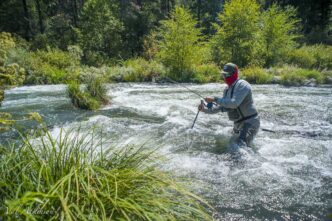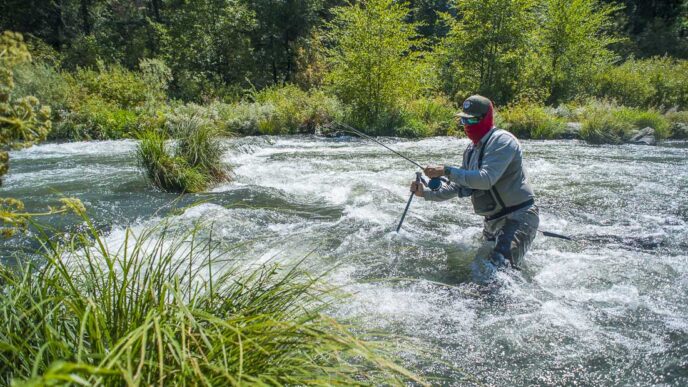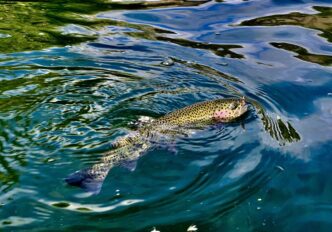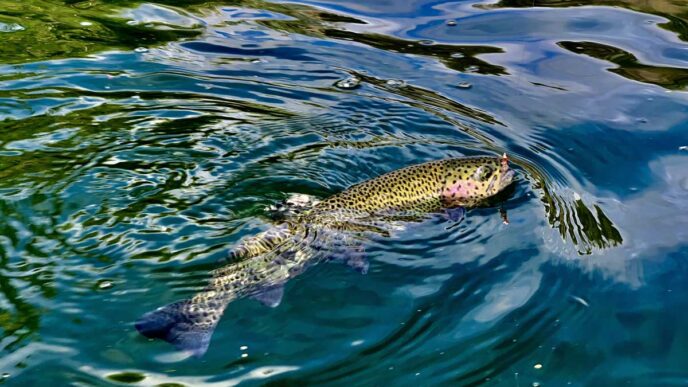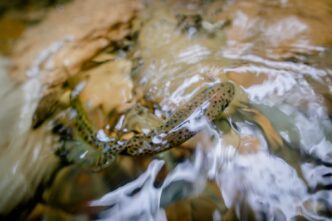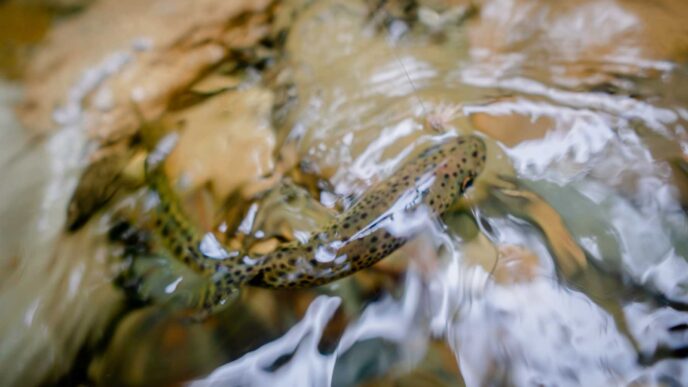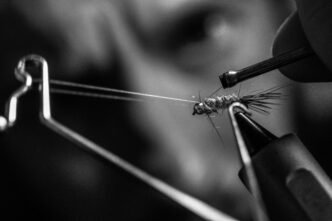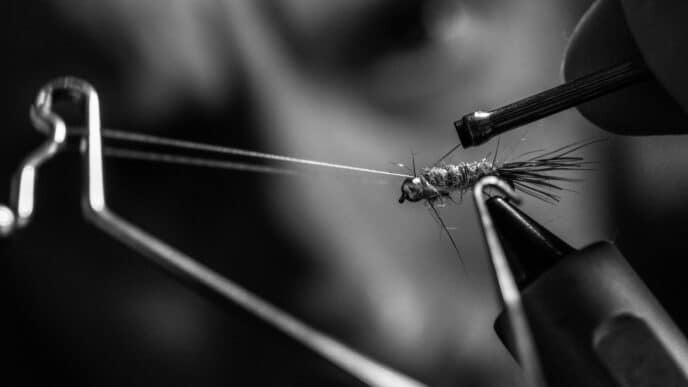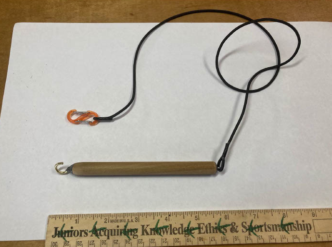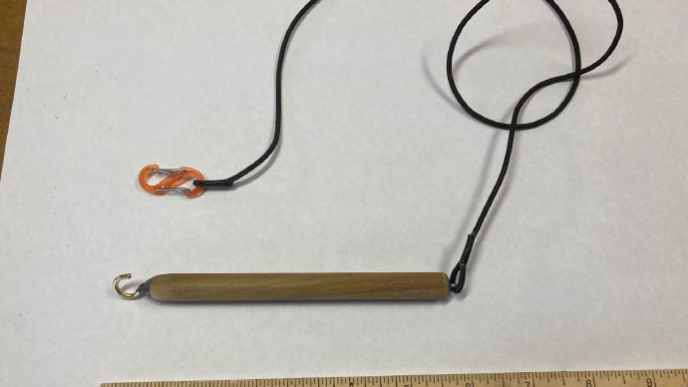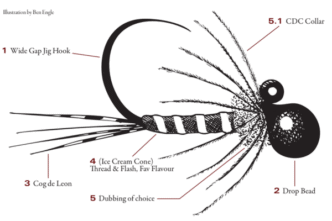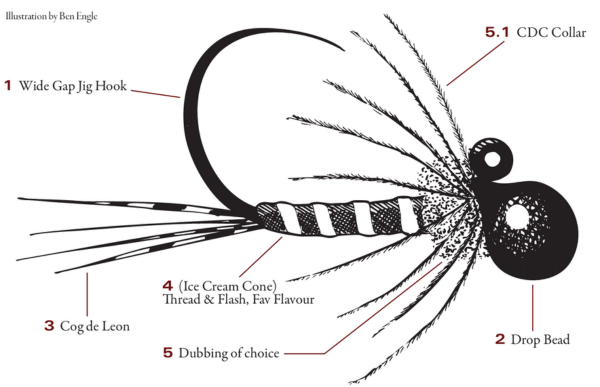When practicing catch-and-release, how often have you heard or even said, “I saw my fish swim away, so it must be fine”? How about after taking photos of your catch or on a hot summer day? Situations like these, along with a basic understanding of fish biology, make a person realize that just practicing catch-and-release is not enough to ensure the health of the fish.
Keep Fish Wet originated from frustration over seeing photos of fish labeled as catch-and-release yet handled in ways that increase the likelihood of injury, stress, or even death. Releasing fish instead of keeping them naturally increases their chances of being caught again, and over the past few decades, scientists have taken a closer look at the fate and health of released fish.
One of the earliest studies on catch and release was published in 1992 by Ferguson and Tufts, examining how rainbow trout respond to air exposure after exercise. Fisheries scientists have long utilized exercise to describe the physiological processes fish undergo when they are on the end of a line. This groundbreaking study demonstrated how damaging and lethal even relatively short (30 to 60 seconds) exposure to air can be for fish. Although the mortality rates reported were artificially high due to the lack of available instrumentation at that time, it raised awareness within fisheries science communities that the impacts of catch-and-release on fish required further investigation if it were to continue being used as a management and conservation tool.
The Furguson and Tufts study advanced the science of catch-and-release, and in the following three decades, hundreds of studies have been published on species ranging from smallmouth bass to milkfish and covering topics from hook size to landing net material. Each study has been instrumental, but no single study can stand alone or answer all the questions we have about the impacts of catch-and-release on fish. The best approach in science is to integrate all the studies; only then can we obtain a complete picture. For me, it helps to think of it like the game Jenga: each study is like a block, and when stacked together, they create the most stable tower.
For example, recovering wild steelhead populations will require large-scale efforts to address the numerous threats they face. However, one aspect that anglers can control immediately and directly is the unintentional mortality and impacts caused by catch-and-release practices. In many watersheds, the majority of steelhead returning each Anglers will catch and handle many steelhead during the season. With anglers interacting with so many steelhead, even a small improvement in catch-and-release survival can significantly influence a population’s ability to sustain or even increase their numbers. By compiling all the catch-and-release science available on steelhead, Keep Fish Wet has created best practices for steelhead anglers.
In 2017, a paper published by Brownscombe et al., reviewed the science on catch and release, focusing on its relevance to anglers and the tools and tactics for best practices in releasing fish. The primary theme that emerged from the authors’ examination is encapsulated in the quote, “The fate of an angled fish upon release is primarily determined by angler behavior (e.g., gear selection, handling time, admiration period); therefore, adopting certain angling practices can improve fish survival.” The authors highlighted various aspects of angling where things can negatively impact fish (e.g., deep hooking), which can lead to mortality, and made recommendations for actions anglers can take to improve the outcomes for released fish (e.g., minimizing air exposure as much as possible).
KEEP FISH WET PRINCIPLES
Many of the recommendations detailed in the Brownscombe paper are encapsulated in the Keep Fish Wet Principles and Tips. The principles below outline three actions that anglers can take to significantly impact a fish’s survival and its health after release.
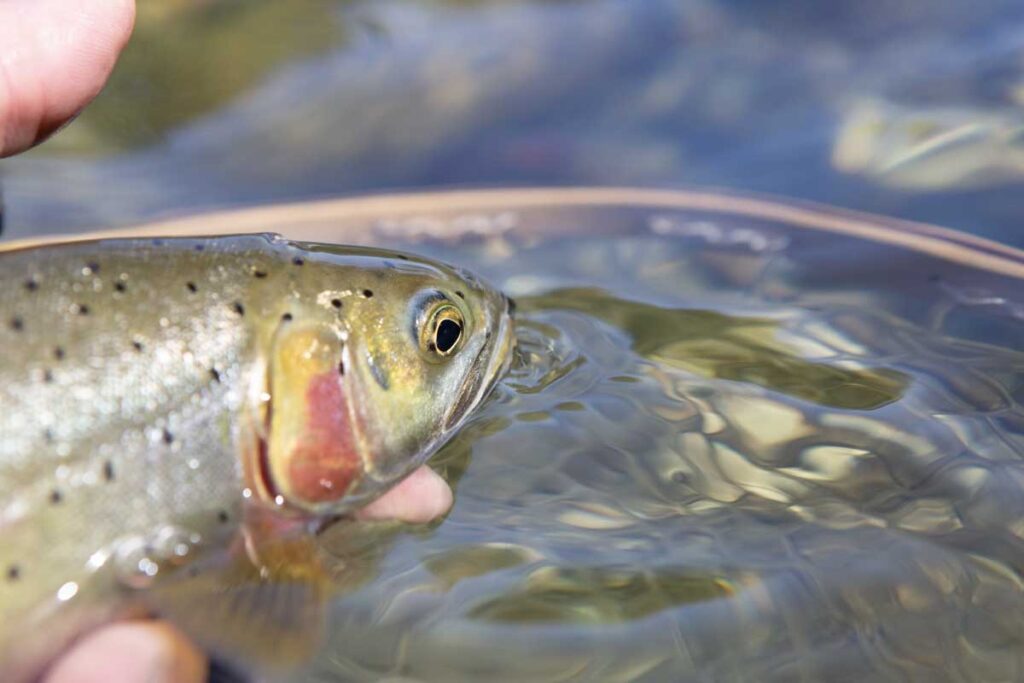
1. Minimize air exposure (to 10 seconds or less)
Fish need oxygen just like us, but they get it from the water, not air. While some species or fishing situations make fish more or less tolerant of air exposure, it is stressful to all fish and should be avoided to the extent possible. Air exposure is more detrimental to bigger fish and at higher water temperatures.
- Ideally, keep fish in the water.
- If you take fish out of the water, try one of these tricks to keep the time short. Hold your breath when you take the fish out of the water; when you need to breathe, the fish probably does too.
- Don’t drip-dry your fish; photos of fish out of the water should be dripping profusely.
- Photograph fish in the water or over the water and dripping wet.
2. Eliminate contact with dry and hard surfaces
Fish need their slime the same way we need our skin. Dry, rough, and hard surfaces remove the slime from fish and can also remove scales and damage fins.
- If you use a net, make sure it has a soft, rubber bag.
- Hold fish with two clean, wet hands, and don’t squeeze or hug.
3. Reduce handling time
Handling = time from landing to release, including how the fish is restrained (i.e. in your hands or a net). Multiple studies have shown that longer handling times can lead to poorer outcomes after release.
- Use barbless hooks.
- If a fish is deeply hooked, cut the line instead of trying to remove the hook.
- Carry a hook removal device—pliers, hemostats, etc. Click here to learn how to use and make your own hook removal tool.
- Only revive fish that cannot swim away on their own.
Each of these principles and tips is simple and achievable for any angler, regardless of skill level or fishing situation. Most importantly, each one is backed by science and will positively affect the caught-and-released fish. As many of our most iconic fisheries face increasing anthropogenic pressures, Keep Fish Wet believes we have a responsibility to foster a community based on science-based best practices for catch-and-release and angling amidst climate change. Every time you catch a fish, it’s an opportunity to put conservation into action.
Sascha is the Executive Director of Keep Fish Wet, where she publishes FinSights, a blog that translates important scientific studies on recreational angling so more people can easily understand them.



